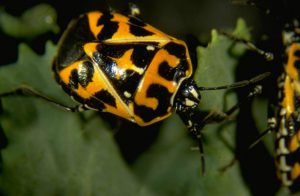
Last time we talked about the importance of insects as predators in the landscape. This third article in the series talks a little about the two percent of all insect species that are considered pests in some way.
Although they damage plants, trees and buildings, bite humans and animals, and spread diseases and pathogens, we’ll focus on the few that have a negative impact in the landscape.
All insects have to eat and when they feed, they either damage plants and trees directly or by spreading plant diseases. The major pest insects in the landscape include: aphids, scales and mealybugs; fire ants; and caterpillars.
- More often than not, the average homeowner finds sap-sucking insects damaging their plants. These include aphids, scales and mealybugs. All three can multiply quickly in the absence of predators like ladybugs. They feed on the sap of plants and excrete sugar water, or honeydew, as waste. In turn, this honeydew supports the growth of powdery mildew and mold on plant leaves. Another insect in this group spreads bacterial and viral diseases in oleanders, maples, sycamores, and citrus.
- Fire ants are welcomed by some and hated by most. These South American natives prefer moist soil in sunny areas and are both pest and predator. They feed on a wide variety of insects and small animals, but their stings, large mounds and affinity for electricity present a real problem for homeowners. In addition, fire ants actually protect and encourage the growth of aphids and other sap-sucking insects in order to collect the sweet honeydew to feed their colonies.
- Lastly, caterpillars are mentioned here simply because they eat leaves and cause damage to trees, gardens and landscapes. That said, many caterpillars in gardens and landscapes develop into butterflies. For herb enthusiasts, swallowtail butterfly caterpillars love to eat dill and parsley. For gardeners, the cabbage white butterfly lays its eggs on, well, cabbage.
Other caterpillars such as the yellow Genista caterpillar that feeds on Mountain Laurel leaves or the webworm that defoliates pecan, mulberry and walnut trees are examples where a large amount of damage occurs over time.
Remember, only two percent of insects are actually pests. Or, here’s a better way to look at it: 98 percent of insects are benign or beneficial to us!




